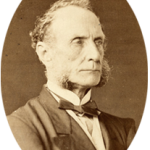
Chinese languages and dialects use phonetic sounds and written characters unlike those used in Western languages. For Chinese words and names to be pronounced by non-Chinese speakers, they must be converted into a usable written form. This process is known as romanisation. Different European nations have developed their own systems of romanisation. Some forms of romanisation used in the 19th and 20th centuries include EFEO (developed in France for French-speakers), Lessing-Othmer (Germany) and Latinxua Sinwenz (Russia). The most common form of romanisation used by English-speaking people was called Wade-Giles. The Wade-Giles system was developed and refined in the second half of the 19th century by Thomas Wade, a British diplomat and academic who specialised in China and Chinese languages. It was further refined by Herbert Giles, another British diplomat, in the early 1900s. Wade-Giles spells Chinese words and names phonetically, using apostrophes and hyphens to indicate some of the complex ‘stop sounds’ present in Chinese languages.
Until the mid 20th century, Wade-Giles was the most common system of romanisation in English-speaking countries like Britain, the United States and Australia. A more recent system of romanisation is pinyin, developed in China itself during the late 1950s and revised several times since. In 1979 the Chinese government declared pinyin the official system of romanisation. Unlike Wade-Giles, pinyin does not employ punctuation marks to show phonetic variations or stop sounds – however, the pronunciation of pinyin letters and letter-groups often differs from English. The pinyin form of Tzu-hsi, for instance, is Cixi – but this is pronounced “tsee-chee”, not “siks-see” or “kiks-see” as some English speakers might expect. Because it is mandated by the Chinese government, pinyin is now considered the most appropriate or ‘politically correct’ form for English-speaking writers and students. On this website, almost all Chinese names and places are romanised using pinyin. A few Wade-Giles romanisations still in common use – such as “Mao Tse-tung”, “Chiang Kai-shek” and “Sun Yat-sen” – are sometimes included in parentheses. The following table lays out pinyin and Wade-Giles romanisations for significant Chinese Revolution people, groups or terms, along with their English pronunciations.
People and groups
| pinyin | Wade-Giles | pronunciation | meaning |
| Qing | Ch’ing | ching | Last imperial dynasty |
| Kung Fu Zi | Confucius | con-few-shus | Philosopher |
| Cixi | Tzu-Hsi | tsee-chee | Dowager Empress |
| Guangxu | Kuang-hsu | gwahn-shu | Emperor 1875-1908 |
| Puyi | Pu-i | pu-ee | Emperor 1908-1912 |
| Sun Yixian | Sun Yat-sen | sun-yat-sen | Guomindang founder |
| Yuan Shikai | Yuan Shih-kai | wahn-shee-ky | Early president |
| Wang Jingwei | Wang Ching-wei | wang-ching-way | Guomindang leader |
| Jiang Jieshi | Chiang Kai-shek | chee-ang-ky-shek | Guomindang leader |
| Mao Zedong | Mao Tse-tung | mowt-say-toong | CCP leader |
| Zhou Enlai | Chou En-lai | cho-on-lie | CCP leader |
| Zhu De | Chu Te | ju-deh | Red Army leader |
| Liu Shaoqi | Liu Shao-ch’i | leesh-ow-chee | CCP leader |
| Deng Xiaoping | Teng Hsiao-p’ing | deng-sheow-ping | CCP leader |
| Lin Biao | Lin Piao | lin-pi-ow | CCP leader |
| Jiang Qing | Jiang Ch’ing | jee-ahng-ching | Mao’s fourth wife |
| Tongmenghui | Tung-meng Hui | tong-men-hwee | Early political group |
| Guomindang | Kuomintang | gwo-min-dahng | Nationalist political party |
Places
| pinyin | Wade-Giles | pronunciation | meaning |
| Beijing | Peking | bay-shing | Capital city of China |
| Nanjing | Nanking | nahn-jing | Nationalist capital |
| Shanghai | Shanghai | shang-high | Southern coastal city |
| Jiangxi | Chiang-hsi, Kiangsi | ji-ahng-shee | Province, CCP soviet |
| Yan’an | Yen-an | yeh-nahn | Post-1936 CCP soviet |
| Shaanxi | Shensi | shahn-see | Northern province |
| Huangpu | Whampoa | hwang-pew | GMD military academy |
| Guangzhou | Canton | gwahn-jo | Yellow River |
| Sichuan | Szu-ch’uan, Szechuan | sitch-wahn | Western province |
| Guangxi | Kuang-hsi | gwang-shee | Southern province |
| Huang He | Hwang-ho | hwang-he | Yellow River |
| Chang Jiang or Yangtze | Ch’ang Jiang | yung-tsee | Major river |
| Xinhai | Hsin-hai | shin-high | 1911 revolution |
Information and resources on this page are © Alpha History 2018. Content on this page may not be copied, republished or redistributed without the express permission of Alpha History. For more information please refer to our Terms of Use.
